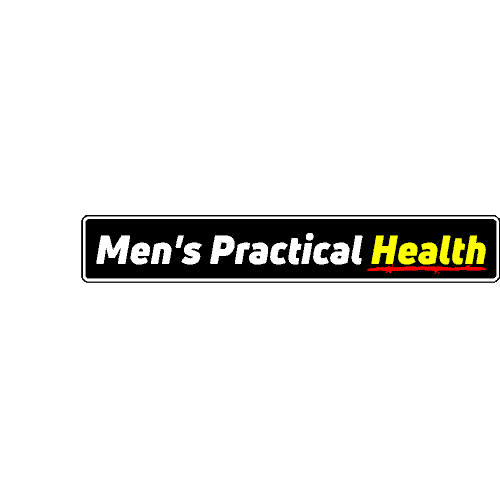If you’ve reached the big four zero and are wondering if you can build muscle mass over 40, then look no further. I’m going to give you the truth on the matter.
As a former certified personal trainer who returned to the gym in my forties, I know first-hand if more muscle can be gained or not in the peak years of life (alright, maybe that last part might be stretching it a bit).
But don’t let age get in the way of wanting to improve your physique, as I go into the issues around building muscle after 40.
Today, we will shatter the myth that building muscle mass over 40 is an impossible feat.
And while I can back up this claim with research, I know first-hand that gaining muscle at forty and beyond is realistic. I returned to the gym in my early forties and did just that.
Now, I’m not claiming to be built like Arnold Schwarzenegger or anything like that. But I am proof that muscle building potential is still alive well into your forties.
So don’t let age get in the way of wanting to improve your physique, as I go into the issues around building muscle after 40.
Can You build muscle after 40?
Building muscle after 40 isn’t just a pipe dream; it’s a physiological possibility. Research shows that men can build muscle mass over 40 with consistent resistance training.
Also, resistance training can slow down muscle loss (sarcopenia). This tends to creep in after your 30s.
But there’s a catch …
It’s going to take more than just the occasional trip to the gym. It’s going to mean consistent dedication to train hard.
However, if you’re prepared to be disciplined, it’s absolutely worth it.
So, the key to stimulating muscle growth is through:
- Strength training
- Good nutrition
- Proper recovery time
And while you might not be the spring chicken you once were if you follow those three principles …
You might actually end up being in the best shape of your life.
How much muscle can a 40-year-old gain in a month?

Let’s set expectations: Rome wasn’t built in a day, and your new, improved physique won’t be either. Plus, whether you like it or not, the muscle building potential in older adults is lower than when you were in your 20s.
But the beauty of building muscle over a long period of time is that it teaches you discipline to stay the course. Which most people fail with. But by adding a regular fitness routine to your lifestyle will improve your overall health.
It’s difficult to say how much muscle you can gain in a month because four weeks is a short amount of time. However, studies have shown that people can gain around 3Ib of lean muscle mass after ten weeks of strength training.
Even better, other research shows individuals gaining 2x as much muscle after nine months of resistance training.
If you’re a beginner, congratulations! You’re likely to see faster results than advanced lifters. That’s thanks to “newbie gains”.
How many days a week should a 40-year-old lift weights?
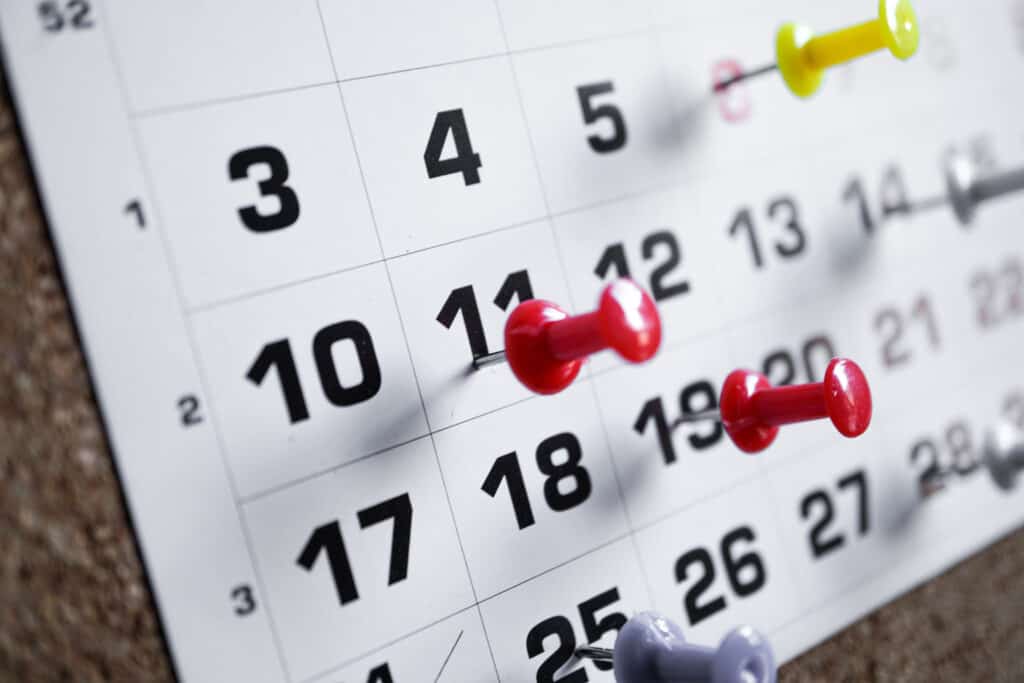
How many times a week you should lift weights is a well-debated topic for any age group. When it comes to weight training in your 40s, the frequency of your workouts can impact your muscle building success.
The general guideline is to aim for 2 – 3 days of full body strength training per week.
For those with busy schedules, full-body workouts two to three times a week can be highly effective. These sessions should mainly include compound exercises as this will target the major muscle groups.
If you prefer more focused sessions, consider a split routine, such as a bro split or upper / lower split. Just be aware that if you use a workout split, you will need to spend more days in the gym in order to train each muscle group twice a week.
Benefits of Lifting Weights Multiple Times a Week
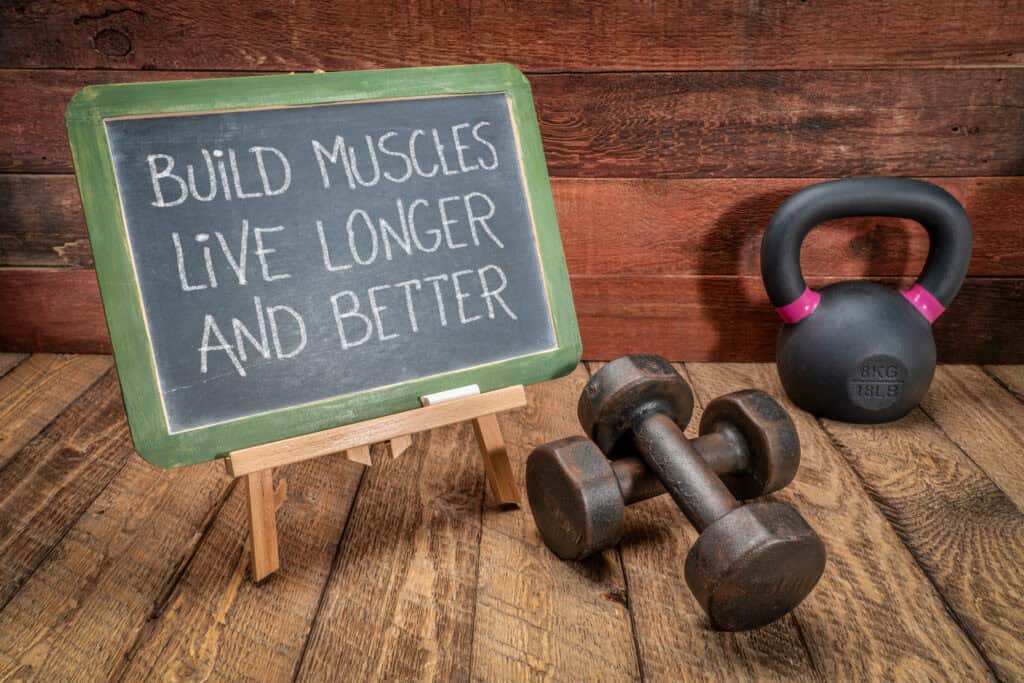
There are many reasons why lifting heavy weights, with proper form, is beneficial. Such as:
- Boost metabolism
- Builds muscle and Strength
- Increases bone density
- Improves body composition
- Enhances mental health
- Builds functional fitness for daily tasks
Supplements for building muscle after 40
Supplements aren’t magic, but they can help. I personally only use two supplements, which are:
Protein powder
Protein supplements help you meet your daily protein intake, which supports muscle growth.
Creatine
Creatine monohydrate is the best supplement you can buy as it increases energy levels.
In my personal opinion, these are the best supplements to use, and there is no need to waste money on multiple supplements that are not needed.
However, we are all different, and you may lack a particular nutrient in your diet. Generally, other popular supplements include:
- Omega-3s
- Vitamin D
- Multi vitamin tablets
Note: It’s always a good idea to consult your doctor or sports medicine professional before taking anything new.
How much protein is needed to build muscle after 40?
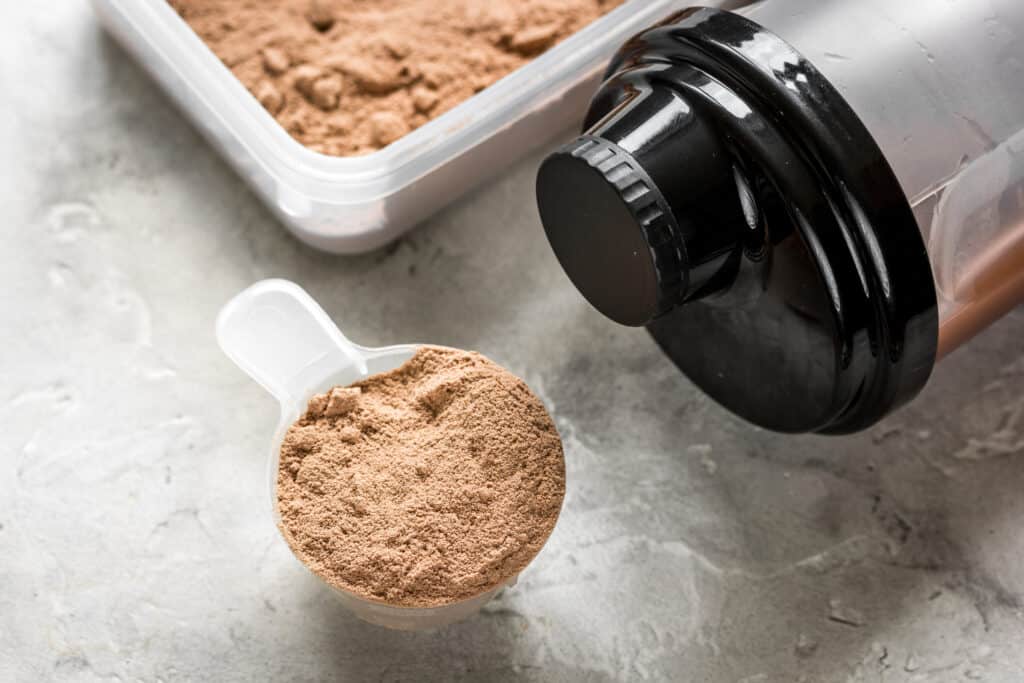
When wanting to build muscle, protein is your best friend. The general advice from personal trainers and fitness influencers is 1g – 1.3g per kilogram of body weight.
If you stick with this, then you will build muscle.
Do not worry if you go over this amount. I’ve heard the myths that too much protein will cause organ damage. This can be true if you already have medical issues, but if not, you will be fine.
Foods like lean beef, chicken, eggs, and fish are excellent options.
If your protein intake is not enough through whole foods, getting more protein via supplements is an alternative.
Perhaps you may find eating breakfast challenging. If this is the case, smoothies with whey protein powder are helpful for supplementing your diet alongside your main meals.
Just make sure you don’t completely replace protein shakes with whole foods.
Tips for building muscle after 40
People can begin training full of enthusiasm but end up quitting due to various reasons. So here are a few tips that will help to keep you on the path of building muscle mass, even when you’re over 40 years old.
Create a consistent routine
Consistency is the cornerstone of any successful muscle-building journey, especially when you’re over 40. As you age, your body naturally undergoes changes that can affect muscle growth and recovery.
Working out regularly with an average training plan will yield better results than training inconsistently with the perfect training program.
So, set a specific schedule for your workouts and stick to it. Even when Netflix tempts you with a binge session. Your future self (and biceps) will thank you for it!
Focus on compound exercises
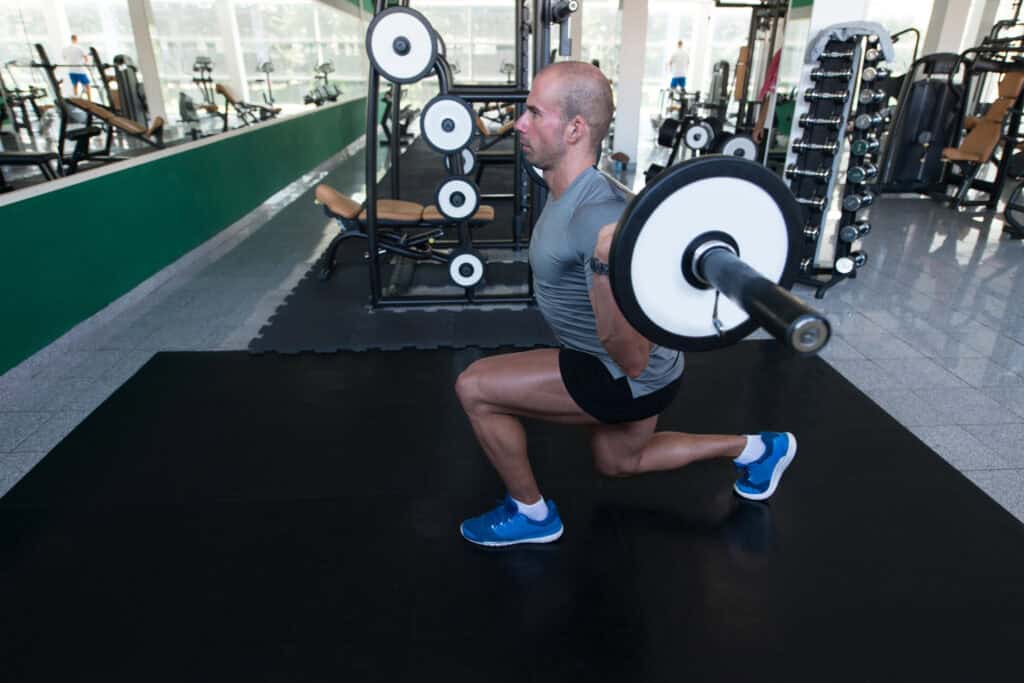
Make sure to focus on compound movements such as bench presses, squats, and deadlifts to maximise muscle growth.
These exercises can take time to learn the correct technique and are physically more challenging. But they will give you better results.
Be realistic
If you’re going to have unrealistic goals, then it’s game over before you begin. So, make sure you set achievable targets for yourself and have the mindset of participating in resistance training long-term.
Be able to adapt and adjust
Life can be unpredictable, and sometimes your schedule might change. You might workout in a small gym where, if it’s busy, the machine you want to use is not available.
If this is you, be flexible and ready to adjust your routine as needed.
As I mentioned earlier, the key is to be consistent. Even if it means modifying your workouts to fit your current circumstances.
If your work schedule changes a lot, then plan your workouts weekly. One week, you might have time to train the entire body each session, whereas the following week, you might have limited time. Therefore, a body split routine is an alternative.
Also, a good way to avoid waiting for a specific exercise machine is to have two exercises in mind for the same muscle. This way, if there are no benches or a machine is unavailable, you have an alternative exercise that you can do.
Example: The barbell bench press is being used; try doing the dumbbell press.
Track your progress
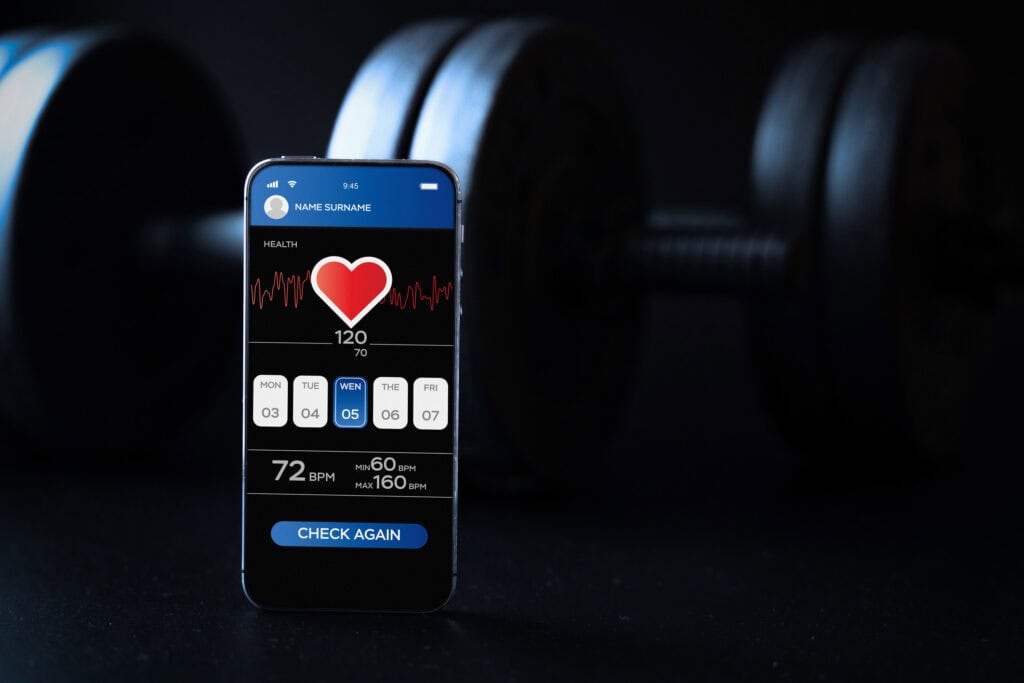
Keeping a workout journal or using fitness apps can help you monitor your progress.
By recording your exercises, sets, reps, and weights, you can see your improvements over time. This can be a helpful motivational tool to push you through any plateauing periods.
However, I do realise that for many, writing down or typing everything into an app might be too time-consuming. I get it; I know what it’s like to be super busy and not have time for all of that.
In this case, instead of trying to write everything down session by session, keep track on a weekly basis or every other week.
This way, you can see if you’re progressing with more weight or reps without constantly spending ten minutes after every session logging everything.
Celebrate small wins
Make sure to recognise your achievements, no matter how small. Each step forward is progress, and acknowledging these wins can keep you motivated and eager to continue.
Remember, it’s about more than how fast you can achieve your goals. It’s about staying the course and making fitness a lifelong habit.
Eat well to build muscle at 40

What you eat is massively important to building muscle after 40. In order to repair and increase muscle size, your body needs the proper nutrients to make that happen.
So, fuel your workouts with a balanced diet of protein, carbohydrates, and healthy fats.
Think grilled chicken with sweet potato or eggs paired with avocado. Simple, satisfying, and muscle-building approved!
On top of eating the right foods, consuming enough calories is essential to support muscle growth. To gain muscle, you’ll want to eat on a calorie surplus of around 300 – 500.
Prioritise muscle recovery
Recovery is the unsung hero of fitness. Prioritise sleep and take days off to let your muscles repair and grow. Muscle soreness may be inevitable in the early stages, but don’t ignore prolonged pain. Your body is trying to tell you something.
Building Muscle After Forty Summary
Building muscle after forty is very much possible and is rewarding. So, don’t let age deter you from achieving your goals.
If you commit to consistent resistance training, a healthy diet, and proper recovery, this will help you build muscle mass along with improving your health.
With the right mindset, you can defy age and show that muscle building is achievable at any stage of life.
So, are you ready to embark on your fitness journey and demonstrate that age is just a number? Let’s show the younger crowd how it’s done!
